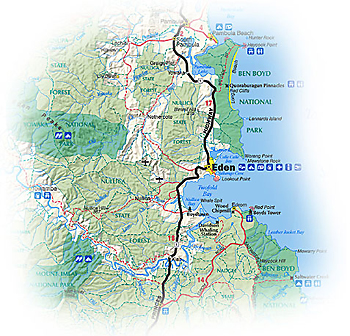|
|
 |
Knowledge Is Key
For Intelligent Decisions
Satellite Logic is a leading,
authoritative source of information in
the Satellite Industry. Located in the
heart of the Silicon Valley, Satellite
Logic provides one of the most
valuable and comprehensive
knowledge bases on the Satellite
market! This is a primary Worldwide
information center which enables our
clients to analyze, evaluate, inquire
and select their best tailored
solutions. Our company sets the
industry standards for targeted
buying leads, reflecting a dramatic
advance over traditional marketing
solutions.
|
|
|
 |

Maps are now such commonplace objects and geographical forms
and so standardized in our minds that it is hard to imagine a world
without them. For example, we recognize the shape of a familiar
landmass like Africa, whether it appears on a map or on a coffee
mug.
The field of the history of cartography has been transformed in the
past two decades. A map has been traditionally defined by
geographers as a "representation of things in space," a definition
that implies a certain level of physical correspondence. Another
definition - maps are graphic representations that facilitate a spatial
understanding of things, concepts, conditions, processes, or events
in the human world. This definition takes one away from seeing
maps as objective representations of physical space into considering
them as human documents with all their attendant biases and failings.
Such artifacts as diagrams of imaginary cosmographies, landscape
paintings, and "mental maps" may now be considered maps.
Cartography is the art and science of map making. Traditionally, the
history of cartography had been dominated by geographers and was
viewed as a triumphal march toward the increasingly accurate,
measured maps of the present. Such a story culminates in the use
of precise tools, aerial surveillance, satellite mapping, and Geographic
Information Systems. The maps of the past tended to be discounted
as crude and clumsy approximations of "real" space.

There seems to be no single book on the development of mapping
techniques from the impressionistic views of the Middle Ages to the
introduction of latitude and longitude in the fifteenth century and the
invention of triangulation for use in surveying in the sixteenth
century. Mapmaking tools were refined in succeeding centuries, up
through the twentieth-century explosion of new technology. The
introduction of aerial photography (first balloons, then airplanes)
produced dramatic changes in mapping, enabling mapmakers to
extend their vision to remote, inaccessible areas of the world. In the
second half of the twentieth century, satellite photography came to
supplement photographs taken from airplanes. Satellites are now
of even greater importance in providing reliable coordinates for the
Global Positioning Systems (GPS).
The drawing of maps has been revolutionized by the use of
computers. Using the appropriate software, the mapmaker can
change projection, scale, or text, and print the results with ease.
At the present, mapmaking is going in two diametrically opposed
directions: the increasing, even finicky, accuracy of physical maps,
and the quirky, cartoon-like maps that accompany advertising,
journalism, and other popular media. The map is now such a familiar
image that it is hard to imagine a time when most people had never
seen one. The daily weather map is an example of the widespread
modern use of maps, whether one sees the colored version in the
newspapers with its cryptic array of signs or the animated version
on television with its simulated swirling air masses.
Today, cartography is complex and diverse. That doesn't mean that
they are not user-friendly, they are. User interface and navigational
abilities are amazingly simplistic to use and understand. Teams of
engineers and cartographers who research and develop geographic
data, apply their knowledge to GPS units and Chartplotters. They
are in constant effort to provide the world with accurate maps on
the road, on the trail, in the air, and in the water. They provide
detailed guidance to almost every major city and rural area on the
planet.
|
|
|
|
